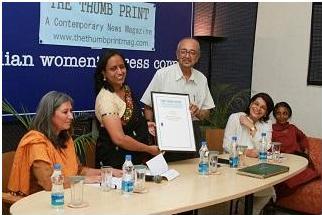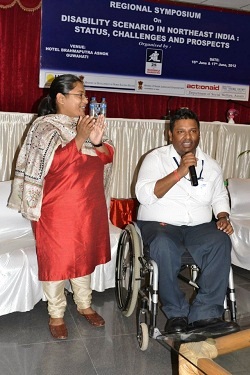[I]
Slight drizzle has started. As clouds hover above, Jameel Ahmad, part of a circled group – all in their late twenties – is listening carefully to his friends. “We need to stay away from these littered shells”, Mudasir, his friend, says with a sudden sigh, “God only knows when this hardship will end.” For Jameel, hearing words like ‘littered shells’ is not a new thing. All his life he has seen many. They are everywhere; in his backyard, near the village stream, outside his school, adjacent to the local mosque – all unexploded, calling death. He has heard some explode. A loud band, then a deafening silence followed by cries and screams. Last time he heard one explode was on the late afternoon of 19th this month, which tore a 7-year-old girlto pieces.
Jameel has just completed his studies. He is now helping his Father in the fields.He takes care of the cattle, makes sure they are fed properly, and then late in the evening, he flocks them back to their shed. He remains busy, but not today. He didn’t go out far into the fields to feed his cattle. In fact, nobody in the village did. Everybody is at the house of Riyaz Ahmad Parray. Day before, Riyaz buried his daughter, Simran.She died when she and her brother, Fayaz – a 5-yeard-old boy - were playing with a live unexploded shell. Simran died seconds after the shell ripped her apart. Fayaz lost his legs. The sound made by the explosion was audible throughout the whole village – one which Jameel also heard.
As Jameel points out to the house of Riyaz Parray, not so far away from his sight is the meadow of ‘Tosa Maidan’ – vast and picturesque, but deadly. There, in its tall wild grass, lie thousands of unexploded shells, littered around during Indian Army’s heavy artillery shelling in the area. Tosa Maidan has been used by Indian Army as a test-firing range from past 50 years.
Under the lap of this meadow, lies Drang, a village of about 800 households. Riyaz Ahmad Parray’s family is one among them.
[II]
Shunglipora, a not-so-different village from Drang has no populated streets. Very few people can be seen outside, and those who are to be seen, are wearing traditional cloak called Pheran, which prevents them from harsh cold. Under these cloaks, mostly torn, they hide their misfortune. Almost every fourth person in Shunglipora has burnt flesh, severed fingers, amputated arms or a chopped leg. Those who are left, have stories – of dead, injured, handicapped and maimed bodies.
Almost 900 families have been affected by the explosion of littered shells in Tosa Maidan. According to locals, almost 90 people have died in the last two decades because of these unexploded shells. If locals of Shunglipora are to be believed, 60 people have died of the same reason from their village only. Most of these deaths have occurred in Tosa Maidan alone and many have also died when these littered shells were washed away by strong rains, landslides, and streams, later reaching to their villages.
Shunglipora, as locals call it, is ‘Tosa Maidan’s curse’.
[III]
The road to Simran’s house is an uphill task, filled with boulders of every size. Behind a maze of old dilapidated single-story mud houses, lies a decades-old building. On a porch, lays a wooden bed. Some people are sitting on it and others, standing next to it. Every eye is stuck to the road which leads to the house. Simran lived here.
Jameel points out to a staircase. The concrete staircase which leads to the porch has strange marks on it – a deep scar in the middle with small scattered wounds surrounding it. “This is the staircase,” Jameel says, “where Simran died.”
“When I heard the explosion, I saw people running to this place. I followed them. She (Simran) was lying here and next to her was Fayaz struggling in pain,” Jameel says pointing to the staircase. “Blood had streaked onto the tin roof and her body pieces were scattered all around.”
Inside a darkly lit room – its walls embedded with decorations – Manzoor Ahmad Parray, 52, is sitting cross-legged in a corner. As he looks hopelessly outside the window, which gives a clear view of the staircase where the shell had exploded killing his granddaughter and critically injuring his grandson, people come to sympathize him. A journalist sitting next to him is continuously scribbling on his notebook. “Write down the name correctly. It’s Simran. You had earlier reported the wrong name,” he says to the Journalist.
Manzoor was sitting in his room when an explosion shook the earth beneath him. He ran as fast as he could. “I stepped into the lobby and ran outside. I could see nothing but blood. It was everywhere; on the staircase, the walls and on the floor,” Manzoor says holding his head with his hands. “Simran was cut into pieces and her brother Fayaz was next to her – both drenched in bloo
[IV]
Abdul Hameed Malik is the Deputy Sarpanch (Village head) of Shunglipora. As Malik walks through the rain, he overtly takes out his mobile phone and presses the keypad. “Hello! Is Abdullah at home?” he speaks. The voice from the other side is not audible. “Ok Ok. Tell him I am coming to meet him,” he says. “It is the media that wants to speak with him.”
“Abdullah lost his right hand because of a littered shell.He doesn’t work anymore,” Malik says.
The part of the village where Abdullah Malik lives is in absolute difference with the other part. Mud houses with huge pile of cow dung next to them, small streams flowing and huge Deodar trees offer an unceasing sight. On the way, a small mosque stands tall – it’s walls painted green. At the far end, next to a flowing stream – full of boulders – is Abdullah Malik’s house. It has a broken door, broken windows, and a broken roof. Maybe a broken courage too.The man living there doesn’t leave his house anymore.
Abdullah used to go to Tosa Maidan for woodcutting but the last time he held an axe in his hand was 3 years ago. Abdullah lost his right hand when the axe he was chopping wood with, hit an unexploded shell. What happened next changed his life forever.
“Blood was profusely coming out of my hand. I had never experienced such pain before in my life. Everything that was in front of my eyes, turned dark,” Abdullah says, showing his injured arm to the camera. “Due to the heavy blood loss, I became very weak and since that day I have never worked again,” he adds.
Not so far from Abdullah’s house, lives Farooq Ahmad Lone. Farooq, now 35, has only one arm. The other one he had, lays buried in his orchard.
Farooq was 10-years-old when he saw an unexploded shell lying in his orchard. Not seen anything like that ever before, Farooq started to play with it. Farooq’s father, Abdul Ahad, was sitting in his house when he heard a loud explosion. When he reached the spot where the shell had exploded, he saw his son Farooq in a pool of blood. The explosion had ripped Farooq’s right arm.
“I have lived half of my life seeing my only son handicapped. This is the story of every family here. Our lives are left devastated,” Abdul Ahad says, looking towards Farooq.
Here in Shunglipora, spotting a littered shell victim is not a rare sight. Bilal is one among them.
Bilal lost his leg in early 90’s. Taking an unexploded shell as a cricket ball, Bilal kept playing with it until it exploded. Thus making him walk on crutches all his life.
[V]
Back at Simran’s house, her grandfather Manzoor is talking over phone with someone. He is listening patiently and answering in monosyllables. “Yes…Yes” “Ok”. Everyone in the room is looking at him. All are waiting for some news. On the other side of the phone conversation is Simran’s uncle. He is calling from the hospital where Simran’s brother Fayaz is being treated.
“If they (Doctors) want to amputate one more leg, then let them do it. But please, he should survive. Else his mother will die,” he replies to the man on the other side of the phone
Everybody in the room starts to whisper. Manzoor ends the call and cries in despair.
[VI]
It is pouring heavily. The streams of Shunglipora are over-flowing with water. Hameed points out to a small house, with closed windows. “This house has been completely ruined. The family has nobody to take care of,” he says.
This house offers a ghostly feeling. At the entrance, clothes have been kept up for drying in the sun but they are drenched in rain water. Inside, an empty room has been partitioned with small brick walls, which lead to another room. On the extreme right corner of this room is a container made up of tinwhere grains are kept stored. Next to it is a box meant for the personal belongings. Few utensils are lined up uniformly on a mud shelf. That’s it. This is where Raja Begum lives.
Raja Begum has never been to Tosa Maidan. Her husband, Ali Mohammad Khan walked over a littered shell in Tosa Maidan. He was brought back home dead.
It has been 2 years since Khan’s death. Raja has 3 daughters and a boy, who works as a laborer, earning not more than 100 rupees per day, that too twice or thrice in a week. To get her family’s ends meet, Raja goes to a local Mosque on Friday prayers and asks for alms.
“I have nobody to take care of my family. I have left everything to God. He is the one who took away my husband and he will be the one who will feed my family,” Raja says, leaning on a mud wall.
For Raja’s daughter, Ulfat, 9-years-old, her father’s memories is what she is living with. As she holds her father’s photograph and shows it to the camera, she says, “I miss my father.”
For Hameed, this is another story. “Every family here has been affected directly or indirectly,” he says.
There are almost 10 graveyards in Shunglipora and every graveyard has more than 5 victims of littered shells buried in it,” Hameed, the village head says.
Tosa Maidan has been the main source of income for the people of Shunglipora. During summers, most of the families vacate their houses and migrate to Tosa Maidan. They feed their cattle, collect herbs and firewood. “We go to the meadow and Army blows us up there. This is our life,” Hameed says, as he greets Kareem Khan on the way.
Kareem Khan, in his late fifties, has been going to Tosa Maidan since he was child. He has seen Army fire rocket launchers, AGL’s, motor shells, helicopter bombs during their test-sessions. “They have hundred types of bombs. One is just like my fist,” Kareem says and laughs. “I have seen shells as heavy as 70 pounds. They are the ones Army uses in tanks.”
Kareem recounts an incident when an Army officer told Kareem and his colleagues to make a ring for him from an unexploded shell. “He was a mad officer. He wanted us to die. He told us to take the shell to some blacksmith and make a ring from its metal. Later, we told him that if we will touch it, the shell will explode. He didn’t listen to us until we showed him the explosion,” Kareem says. Hameed nods in affirmation.
Like Kareem, most of the villagers know the names of different ammunition used by Indian Army during their artillery firing in Tosa Maidan.
[VII]
More people have started to pour in Simran’s house. They come, greet Manzoor and sympathies him. In the middle of the room, on the red carpet, lays a piece of flour sack wrapped with two wires, colored in black and red. Manzoor points towards it and says, “The bomb was wrapped in this sack.”
“Finding something wrapped inside the sack, Simran must have showed it to her brother and they must have started to play with it. It is how the explosion took place,” Manzoor says to gathering. They all listen in complete silence.
Outside in the rain, Riyaz, father of the duo, is shivering. His Pheran is torn at the chest and a Kangri (fire pot used to keep warm) is tucked to his upper body. He holds a Reynolds 045 blue pen in his hand and cries. “This is Simran’s pen. She gave it me before going outside to play with her brother. She didn’t want to lose it,” Riyaz screams. People pacify him. “It is all written. Don’t cry,” someone from the gathering says to him.
[VIII]
Hameed has to leave. He calls Abdul Sattar, his neighbor. Sattar is carrying a black umbrella, to cover himself from the rain.
Meters away from a stream, next to the mosque, lives the family of Abdul Khursheed Malik. His son Basharathad gone to Tosa Maidan with his father during summer vacations. “He was playing in the open. I saw him picking up something and next moment he was dead. I washed his body piece by piece and buried him,” Khursheed says holding his son’s only photograph in his hand.
Next to Khursheeds house resides another story. Mohhammad Abdullah Sheikh lost his two sons and a nephew 22 years ago. All were killed in the same blast.
“Look, these are my sons,” Sheikh says, as he takes out the photographs of his two sons from his pocket. “You can see them in pieces. They were very small.”
Sheik’s two sons aged seven and nine, and his 14-yeard-old nephew were grazing their cattle near the meadow. Drawn to an unexploded shell in the tall grass, they all died in the same explosion.
Sheikh has seen Indian Army come, fire and go since he was a child. He recounts how Army arrive in huge trucks filled with ammunition and set their guns, take aim on the Tosa Maidan and fire. “This whole area becomes haunted. Nobody is seen outside. The heavy explosion these bombs make our houses shakes. When these 70 pound bombs exploded one after another, everyone turns deaf for a second. Almost every on our village is a heart patient,” sheikh says.
Ghulam-ud-din, a local villager, waits outside Sheikh’s house. He greets Sattar and tells him something. “Ye… Yes. We are going there also,” Sattar says to him.
As Sattar walks briskly in the rain, he talks about Abdul Aziz Malik. In 2007, Malik was collecting herbs in Tosa Maidan, when his digger hit an unexploded shell. Aziz lost his eyes and fingers in the explosion.
Aziz runs a local general store in Shunglipora. Big round spectacles cover his eyes. “You see them,” Aziz points at his eyes. “It cost 3 lakh rupees to get them fixed. I sold all my land and got treated in Amritsar,” Aziz says. As he points out to his eyes, he tries to hide his right hand.
“Show your hand also,” Sattar says to Aziz. “He doesn’t want people to see his hand.”
As Aziz modestly takes out his right hand from his Pheran, Sattar hold him and shows his hand. “This is what Tosa Maidan has done to us. Broken fingers, chopped arms, and maimed bodies.”
Sattar takes few steps and turns back. “50 years they have (Army) have used our land, killed our people, and destroyed our forests, 50 years,” Sattar says vehemently.
Last month, the lease given to the Army 50 years back to use Tosa Maidan as a firing range, was stopped by the Jammu and Kashmir government. “Yes they have stopped firing but what about these thousands of shells. They are going nowhere,” Sattar says moving ahead in a brisk pace. “And you never know if they actually won’t start their artillery firing this summer.”
[IX]
In Simran’s house, few young men are standing at the door. Feroz is one among them. “You want to see these littered shells? I can show you some,” Feroz says.
Feroz leads through fields and with him are few people. After walking some 100 meters from Simran’s house, Feroz stops. “Here it is. Be cautious.”
Feroz points to an unexploded shell which is half fixed in the ground. Its head is poking out and Feroz stands a meter away from it – his finger still pointing towards the shell. “This can explode any moment. See yourself how we find these shells just outside our homes. We try to hide them from children so that they don’t start playing with them but how much can we do,” Feroz says.
Feroz walks a distance and stops. “Here is another, “Feroz says, pointing to a rusted shell on a rock. “We don’t know what to do with these shells. They can explode anytime,” Feroz says.
Feroz explains how these shells are witnesses to what is happening because of the artillery firing by Indian Army in Tosa Maidan.
“Army hardly visits this place with metal detectors. They never collect the unexploded shells after the firing exercise,” Feroz says.
“We have leant to live with these shells. People here are ‘killed by choice’.”
[X]
Rain has stopped and darkness has started to creep in. Sattar stands on the middle of the road. “I must leave now. It will rain again,” he says looking towards clouds which have drifted away towards Tosa Maidan.
Shunglipora has turned melancholic. Nobody stands outside. As Sattar vanishes into the fields, he turns back and says out loud, “You know what; most of the people here in Shunglipora are named Sattar. Not only their names are similar, but their fate too”
“You see that place,” Sattarpoints towards Tosa Maidan, “My brother has also died there. He stepped on an unexploded shell and was found dead after two days of search.”







































